 Previous Day |
Bangor, ME → Portland, ME → Bangor, ME 279.0 mi (449.0 km) |
 Next Day |
A capitol feat is now complete, everyone!
Way back in 2011, on my first adventure outside the state of California, I visited the Utah state capitol and side-stepped onto a side quest: to see all 50 US state capitol buildings! Today, thirteen years later, I am completing that side quest with my fiftieth state capitol right here in Augusta, Maine!
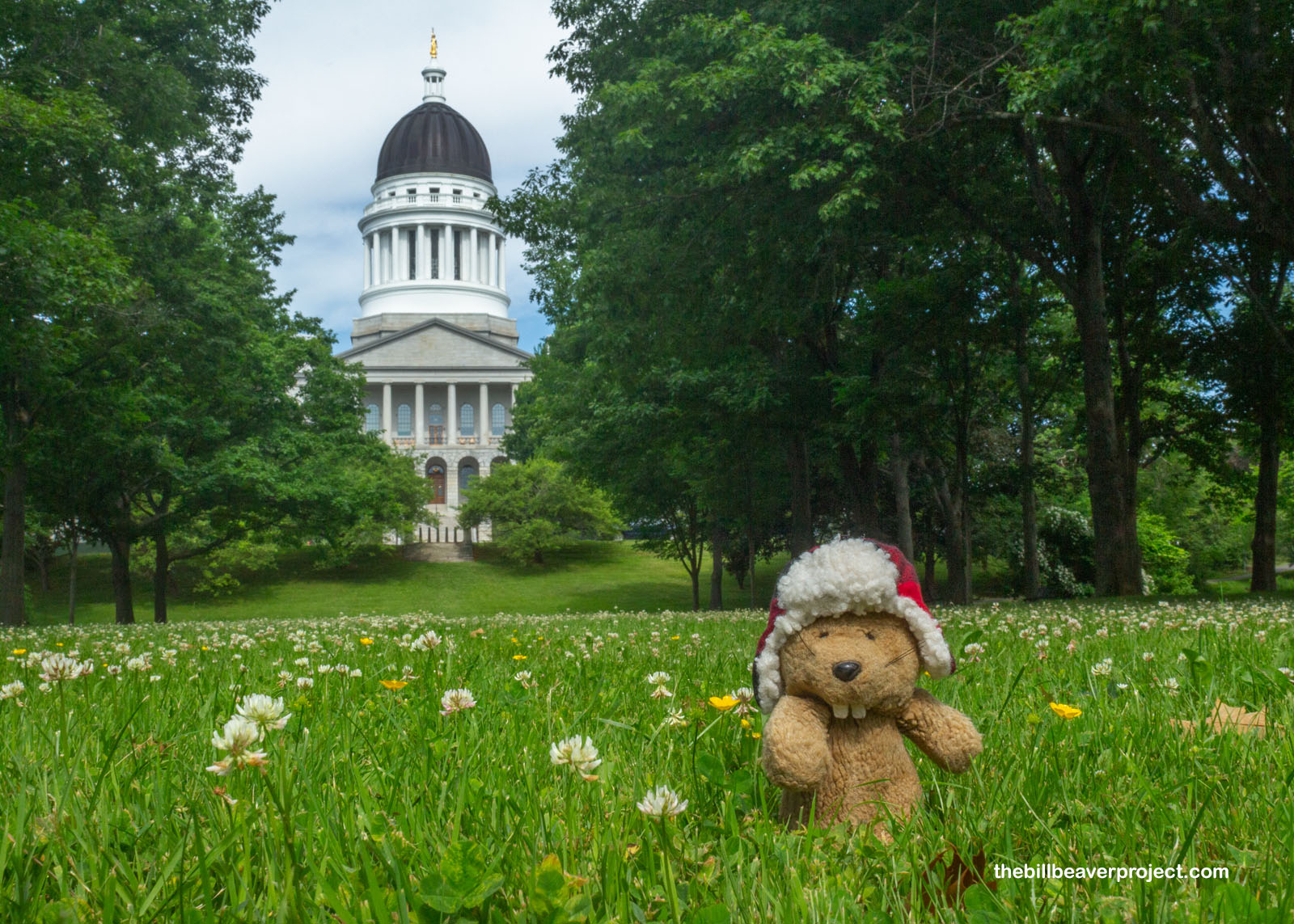 |
Augusta has been Maine’s state capital since 1827, replacing Portland, whose capital status was always meant to be temporary! Construction of the seat of government kicked off on July 4, 1829, and over the next three years, Maine’s state capitol building went up, based on the designs of famed Boston architect and capitol designer, Charles Bulfinch! Unlike most capitol buildings, this one didn’t burn to the ground, because it was made of granite, but even today, it’s scarcely recognizable from the original. That’s because got major remodels in 1890 and 1909, even replacing Mr. Bulfinch’s original cupola with a dome!
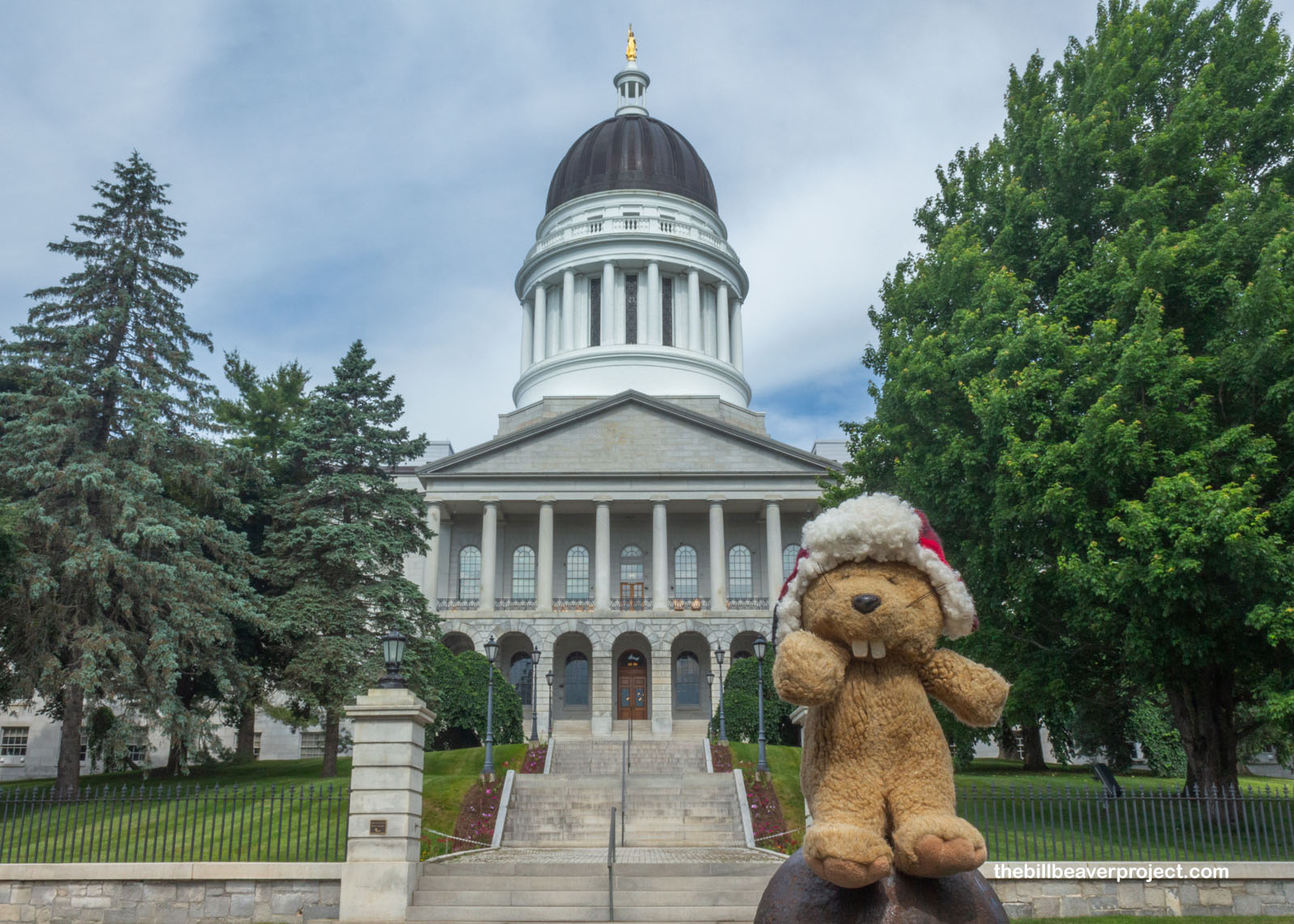 |
I haven’t gone inside all of the state capitols, but to skip out on my last one would have been a real shame, especially since the historic heat dome still hadn’t left Maine, and I was practically falling apart in the heat and humidity, even at this hour!
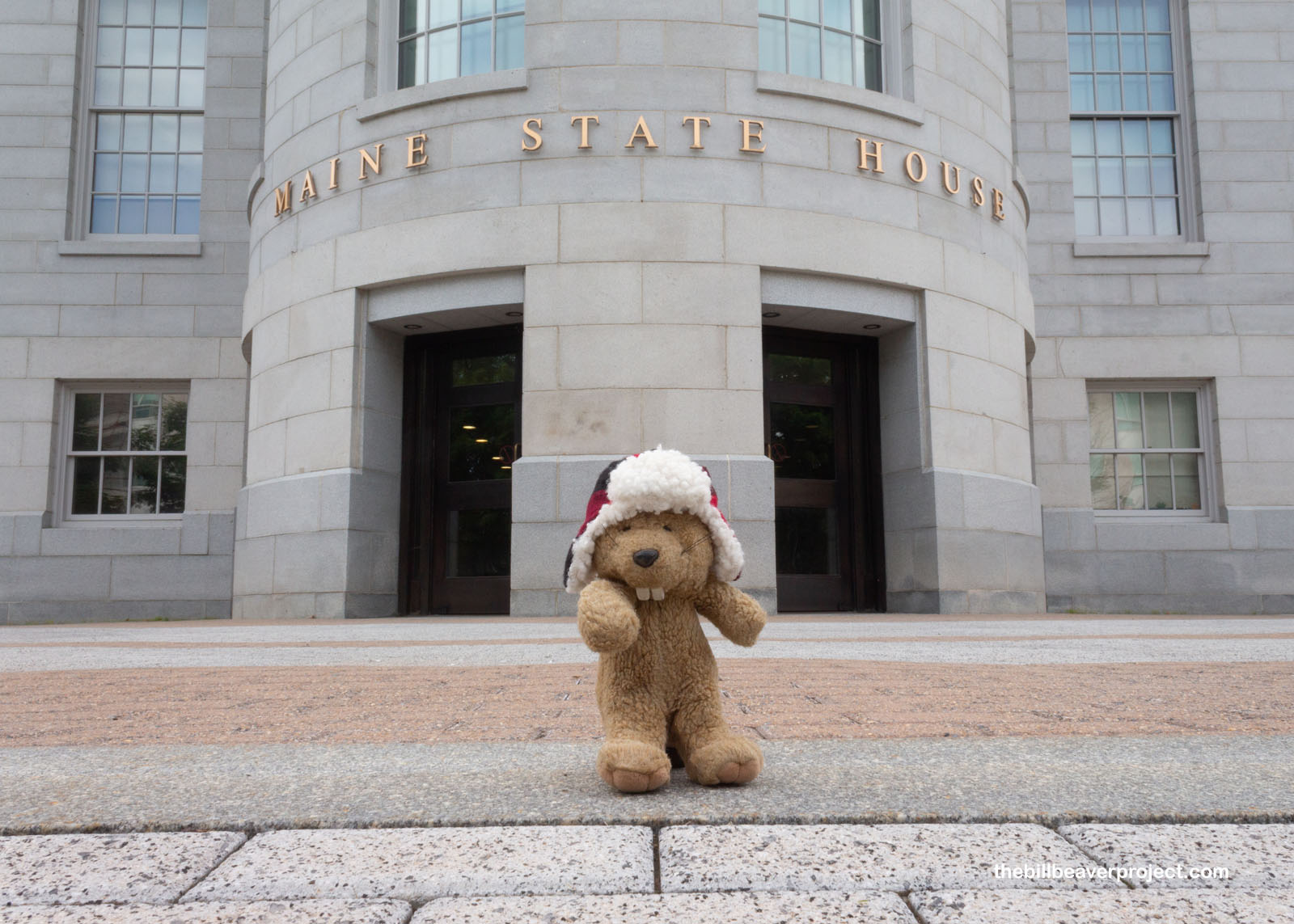 |
Inside, it was kind of simple, with a large hall of replica flags representing Maine’s involvement in wars from Civil to Vietnam, but what was truly remarkable, to me, was the second floor balcony full of rocking chairs! This was a fine spot to sit and reflect, and melt. Wow… A quest complete. I mean, after working up fluid lists like California’s Historical Landmarks and the National Parks, this quest was really complete! Sure, there’s some possibility that there will be fifty-one states some day, but probably not in my lifetime!
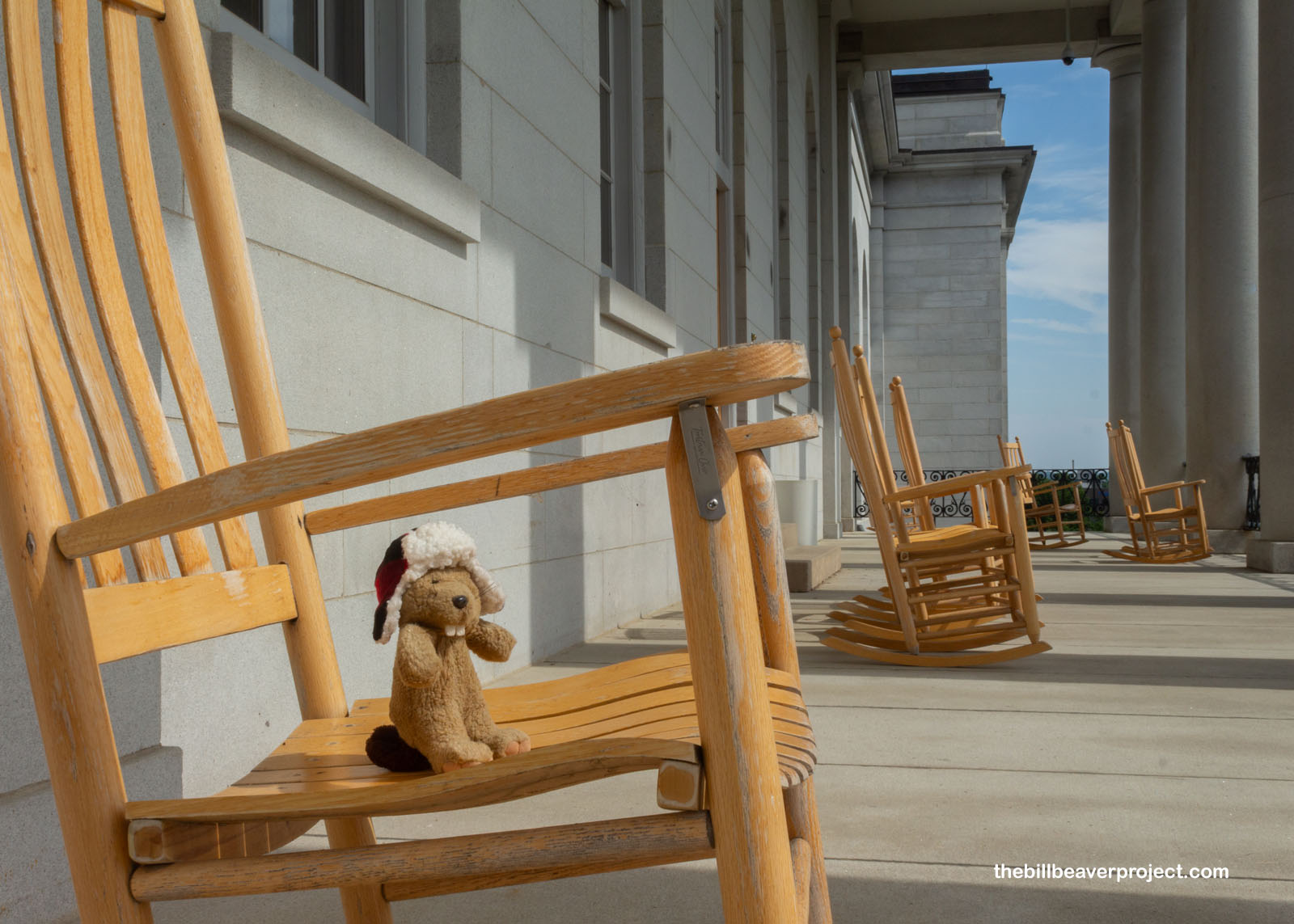 |
It’s still a great big horizon out there, and I’ve got plenty to see. I’m starting to feel it in my bones, though, after 13 years of adventuring. With twenty more national parks to explore and at least one Wonder of the World, this little milestone is giving me some real courage to press on to victory! I still wonder if I’ll ever find George, though.
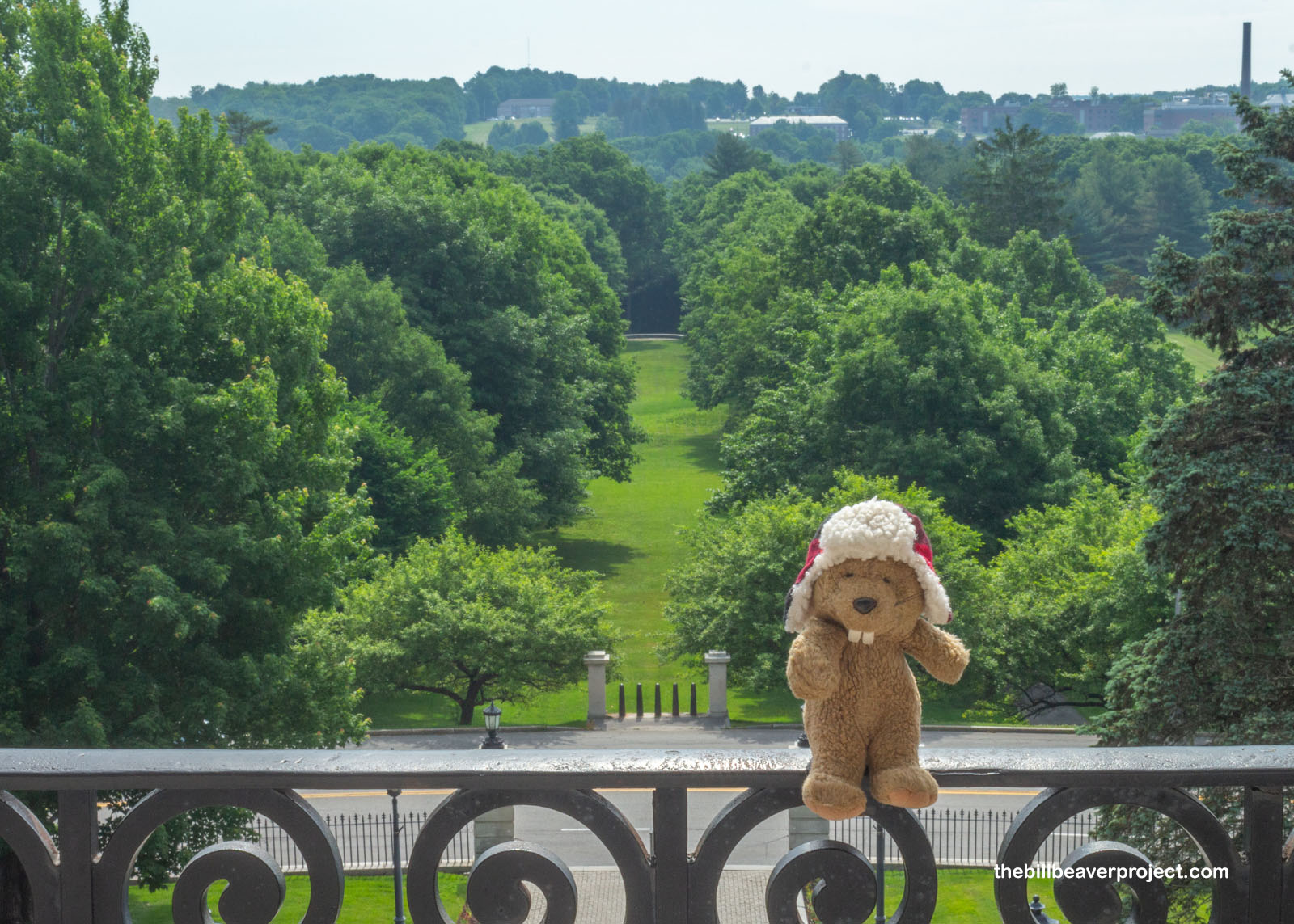 |
Something was fishy as I wandered downtown Augusta, though! Like Punxsutawney, Pennsylvania, this city was chock-full of artistic animals, chiefly that huge, ancient fish called the sturgeon! This Augusta Maine Sturgeon Project has only been in place since July of 2022 and was meant to add a real splash color to the downtown area while celebrating the local living fossils!
 |
Each of these 25 sturgeons were shaped at Fiberglass Farm all the way in Belfast, Ireland then shipped here to Augusta, where they were decorated by local artists. After a few years on the streets, they’re scheduled to be auctioned off in order to raise funds for future projects in Maine’s capital city!
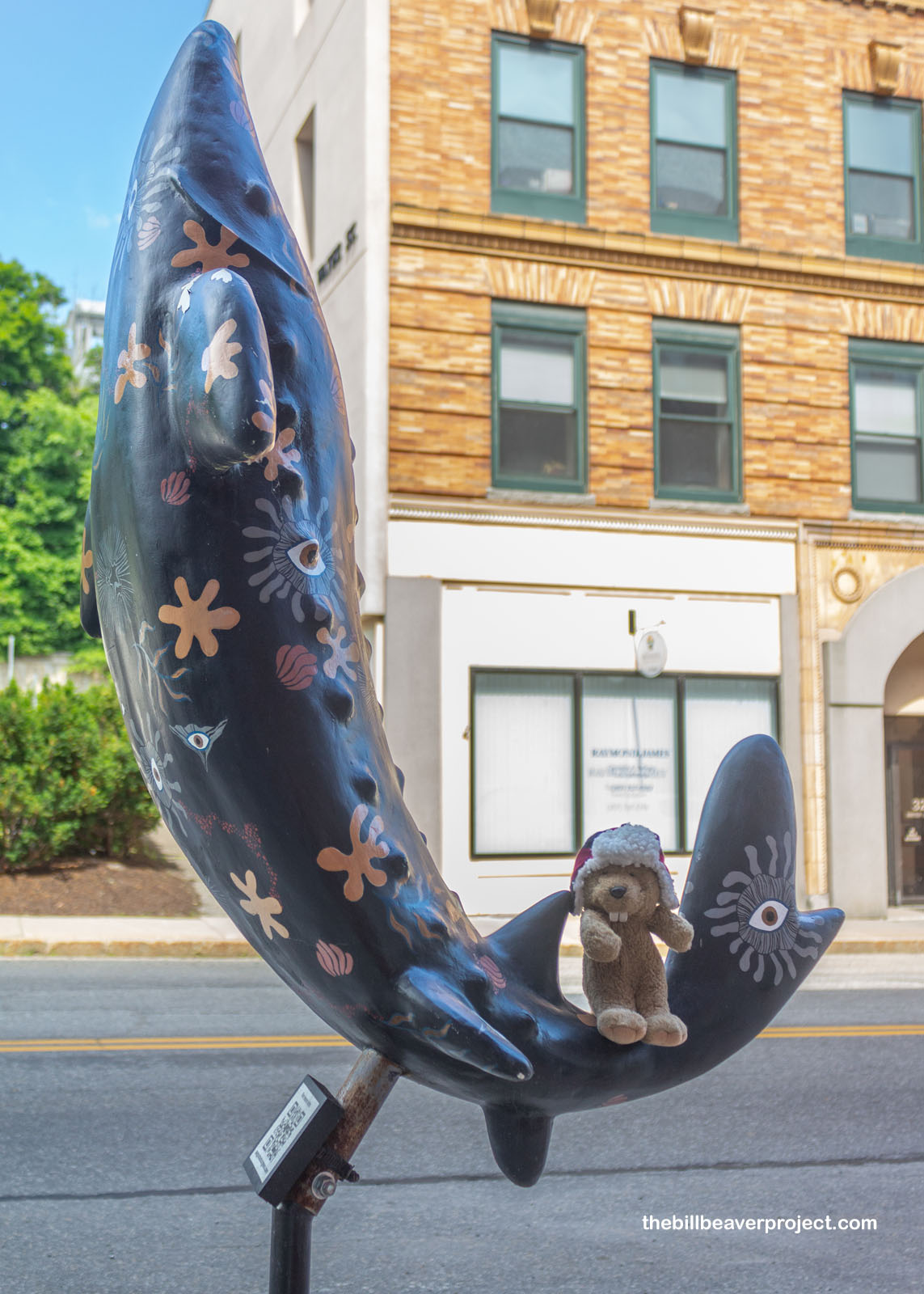 |
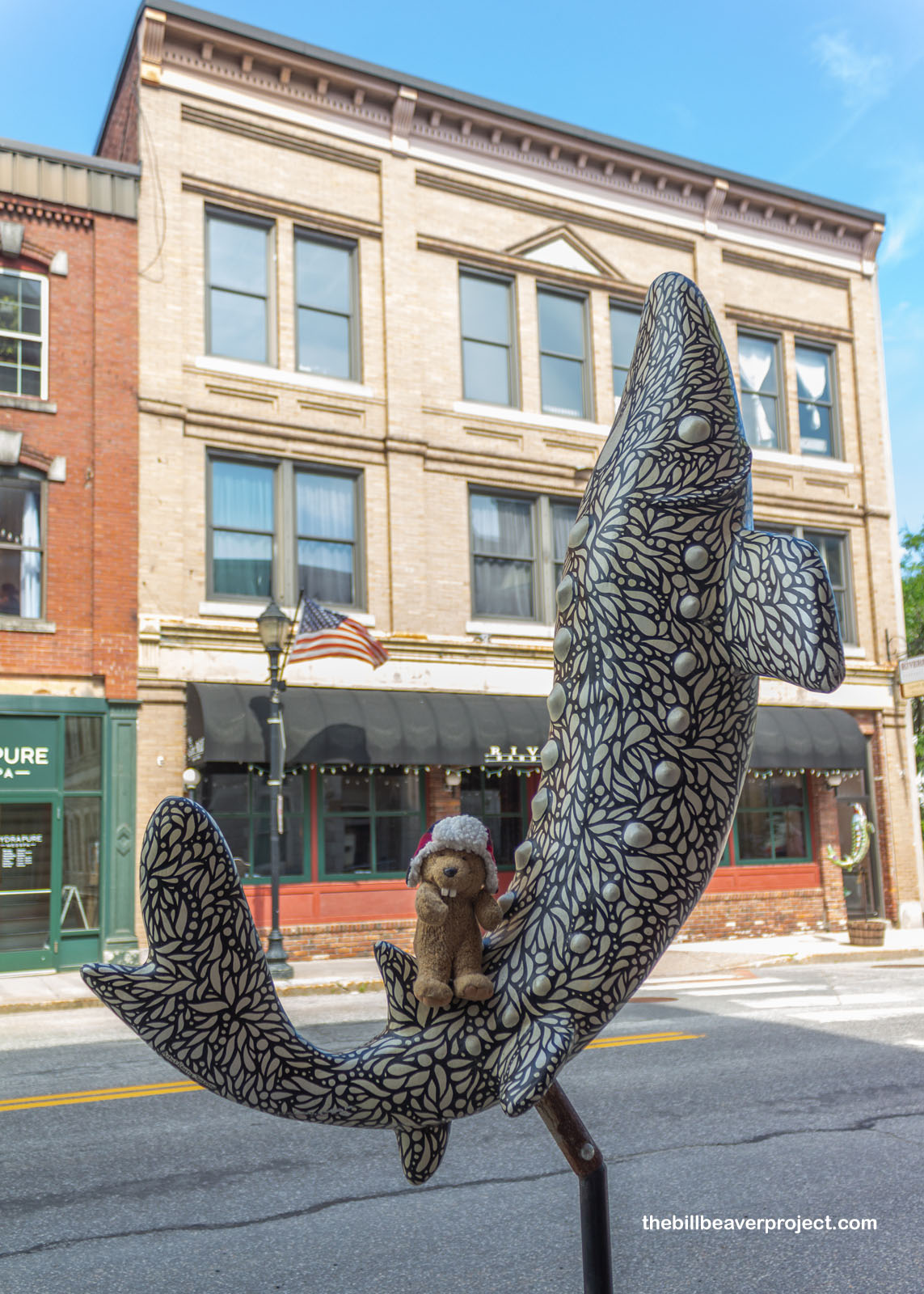 |
But why sturgeons, you might ask? Well, the Kennebec River, which runs through Augusta, is one of the last places in the continental United States (thanks to dams, pollution, and overfishing) to see the mighty Atlantic sturgeon spawn! Every June and July, these huge fish, which can grow to 14 feet and weigh up to 800 pounds, make their way from the Atlantic ocean upriver to find a place to make the next generation’s caviar, and folks perched on Augusta’s riverbanks might just see one such river monster leaping all the way out of the water!
 |
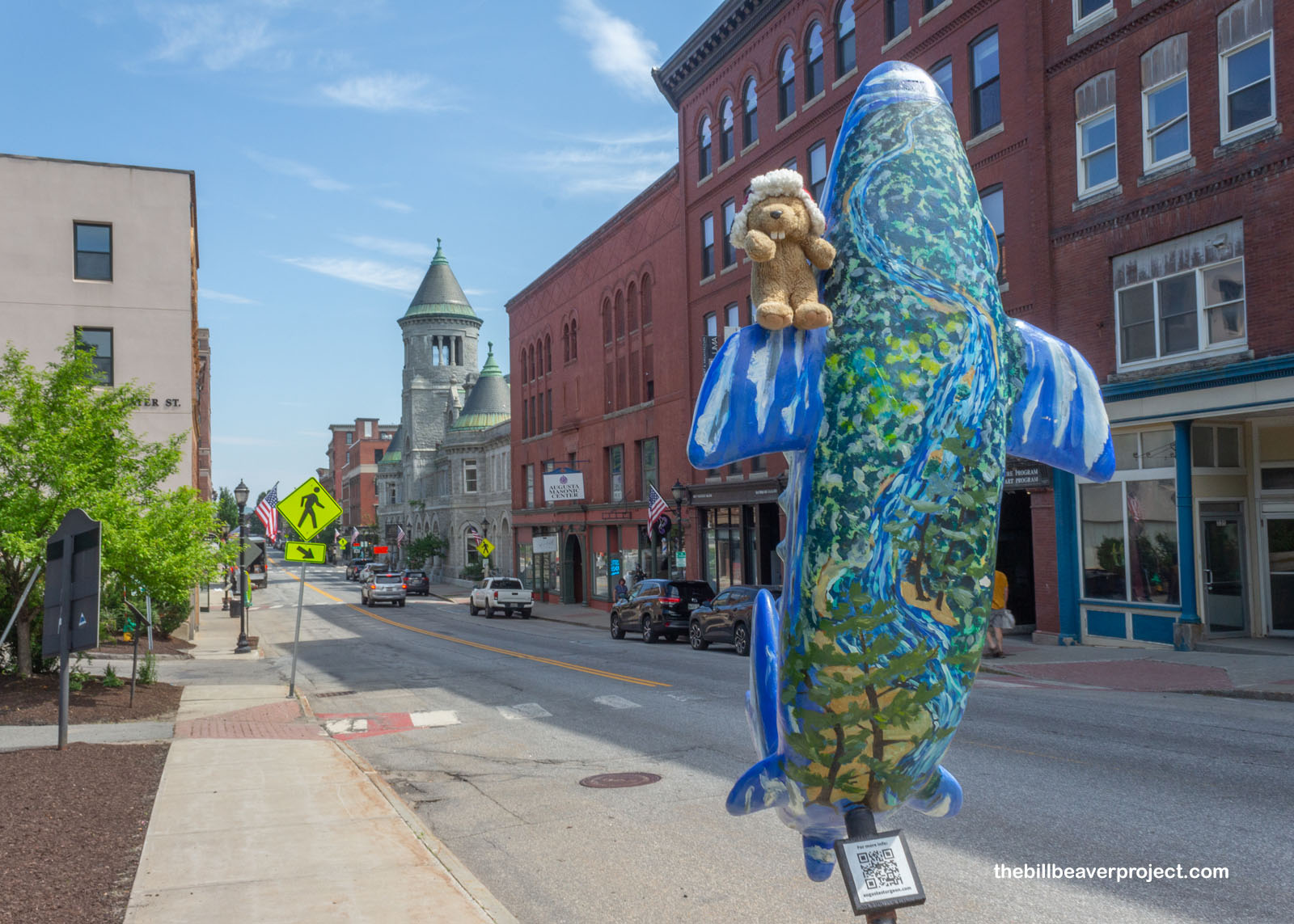 |
Even when these statues are sold off, Water Street is sure to remain colorful, owing to the bright hues of its Nationally Registered commercial blocks, developed in the 1800s to serve the river commerce that’s had a major impact on those sturgeons. All in all, fifty-one buildings make up the Water Street Historic District, making this a really well preserved chunk of the city’s early development!
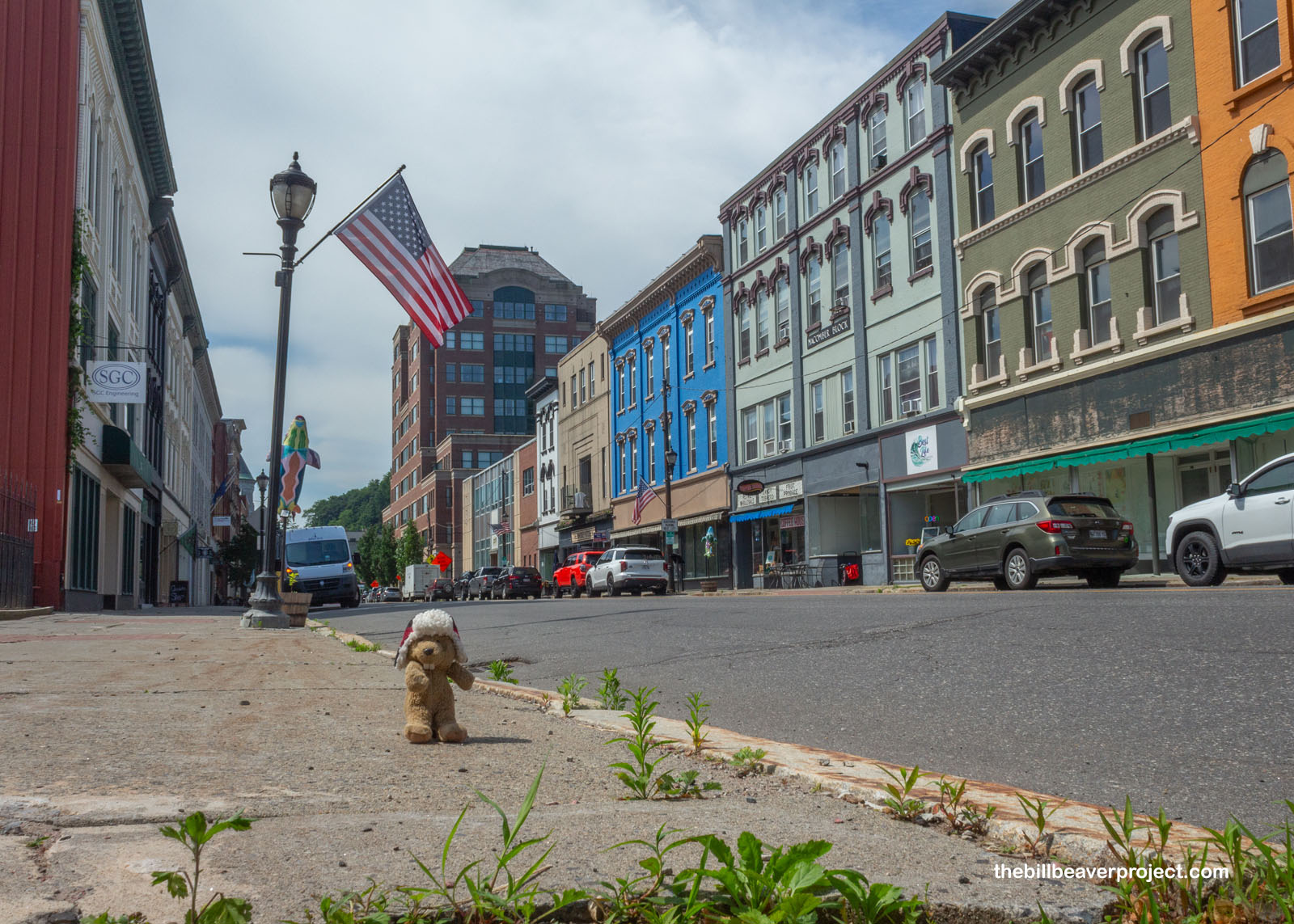 |
Of course, Augusta wasn’t a city from the start, especially when Portland grabbed the early spotlight! In fact, just across the river from Water Street, stood a snapshot of Augusta’s early settlement. Forty-three years before this became Augusta, (for Pamela Augusta Dearborn, daughter of Thomas Jefferson’s Secretary of War), this was the site of a British supply depot called Fort Western! Famously, before betraying the country, Benedict Arnold stopped here in 1775 to stock up while en route to a disastrous attack on Quebec!
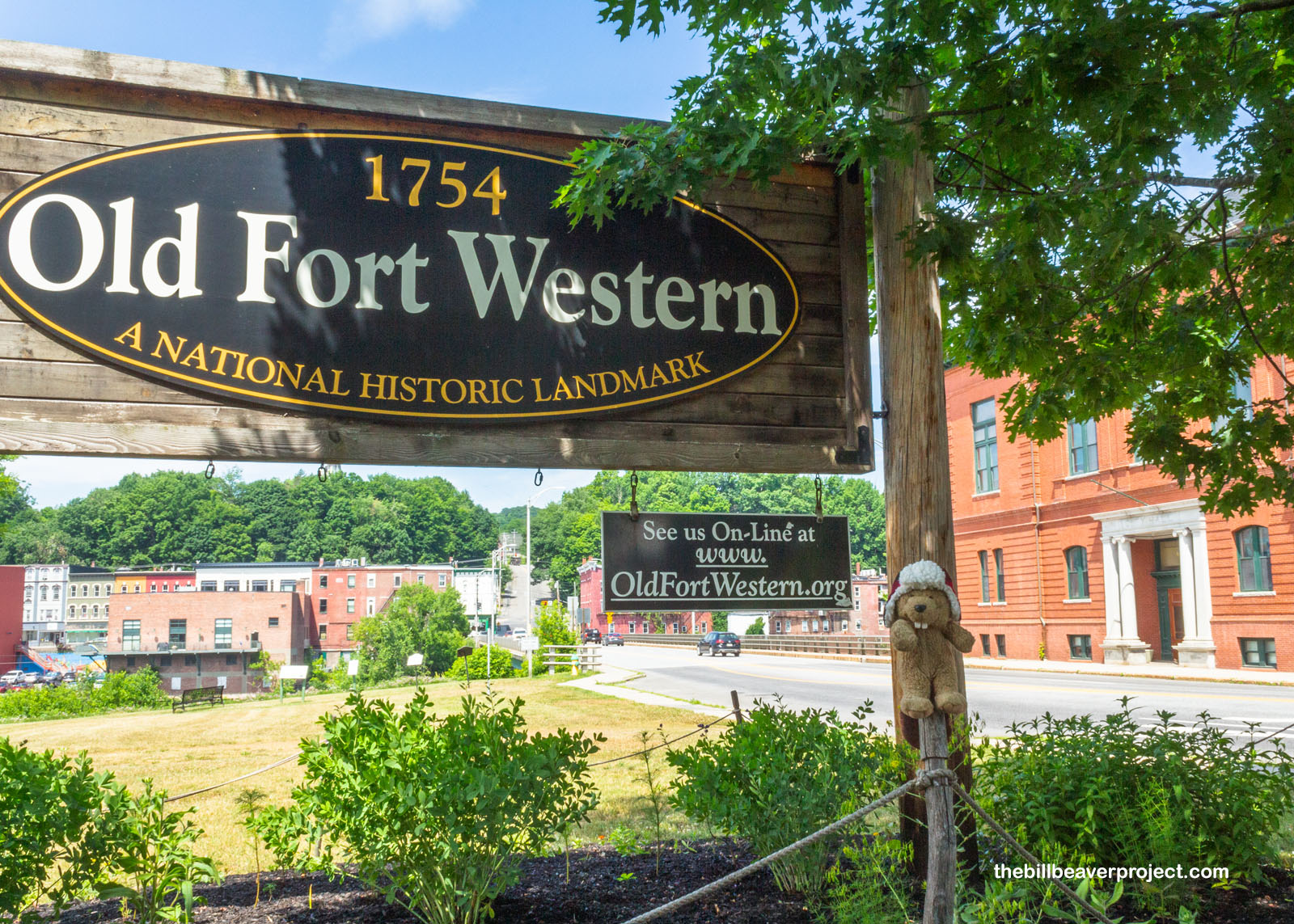 |
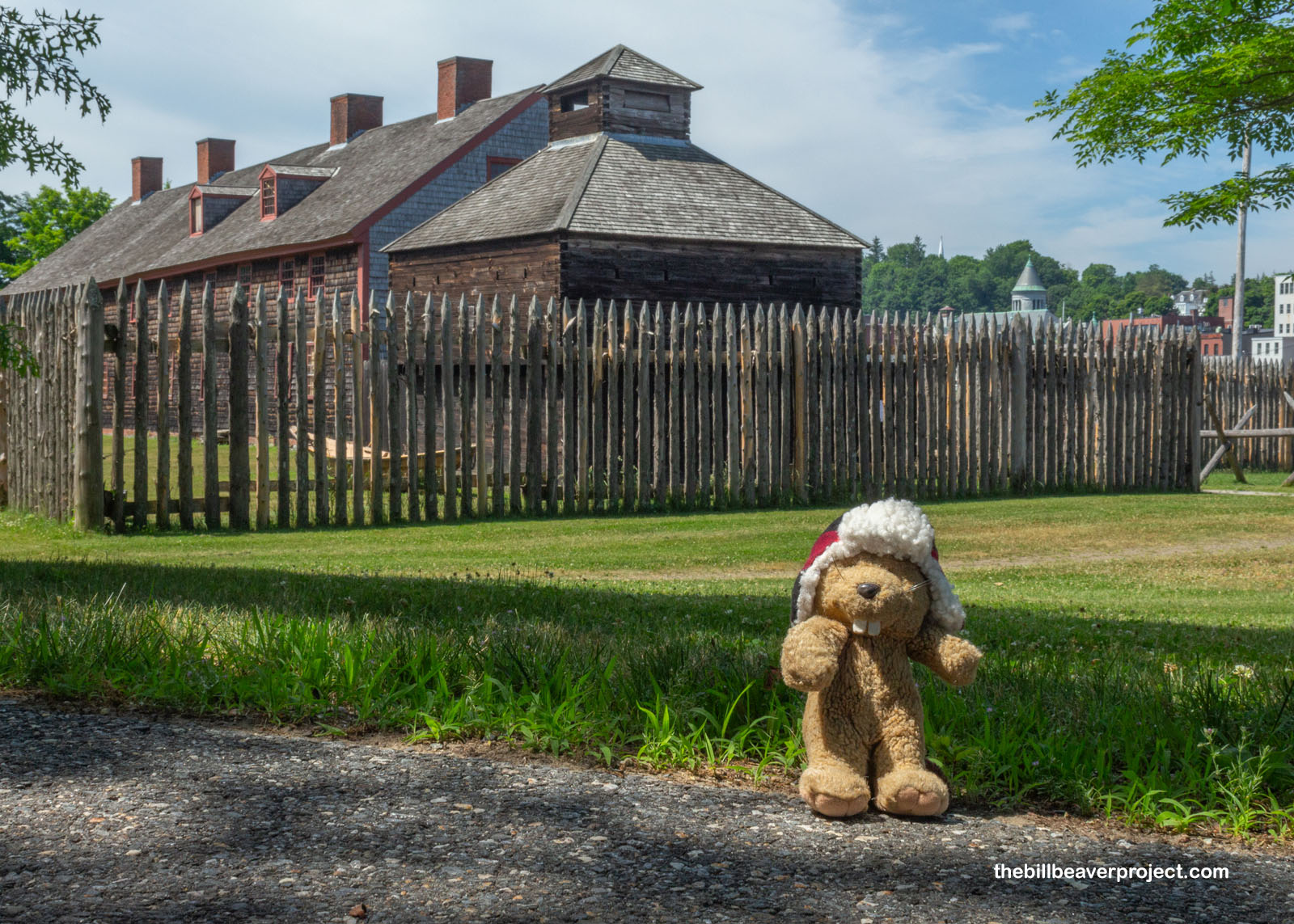 |
Sadly, this National Historic Landmark was closed today, and bedeviled though I was, I already knew my next stop: the North Manchester Meeting House! Dating back to 1793, like many Quaker meeting houses, it wasn’t built to be eye-catching by any means, but this still-operating church stands guard over a local oddity that really makes a passer-by take notice.
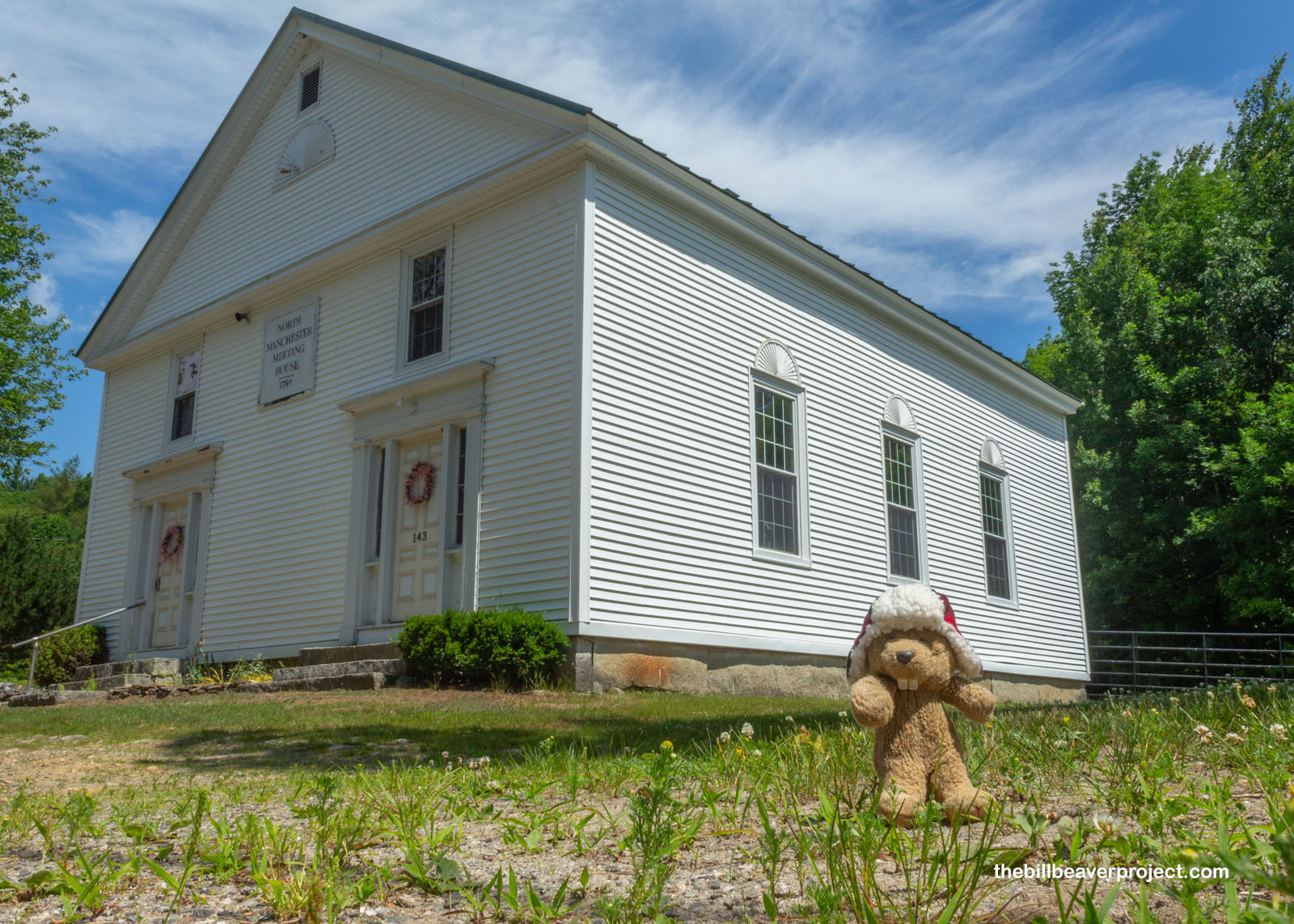 |
I’m talking about the Devil’s Footprint, of course! Now outlined in red on the border of the meeting house’s cemetery, there are several stories about how this footprint came to be. One story is that a construction worker offered to sell his soul to the Devil in exchange for moving a giant boulder! The next day, the boulder had moved, and he’d disappeared, leaving only a footprint. Other stories say that the Devil had chased someone across the rocks, but on my visit, the most diabolic thing I could feel was the heat! Whew!
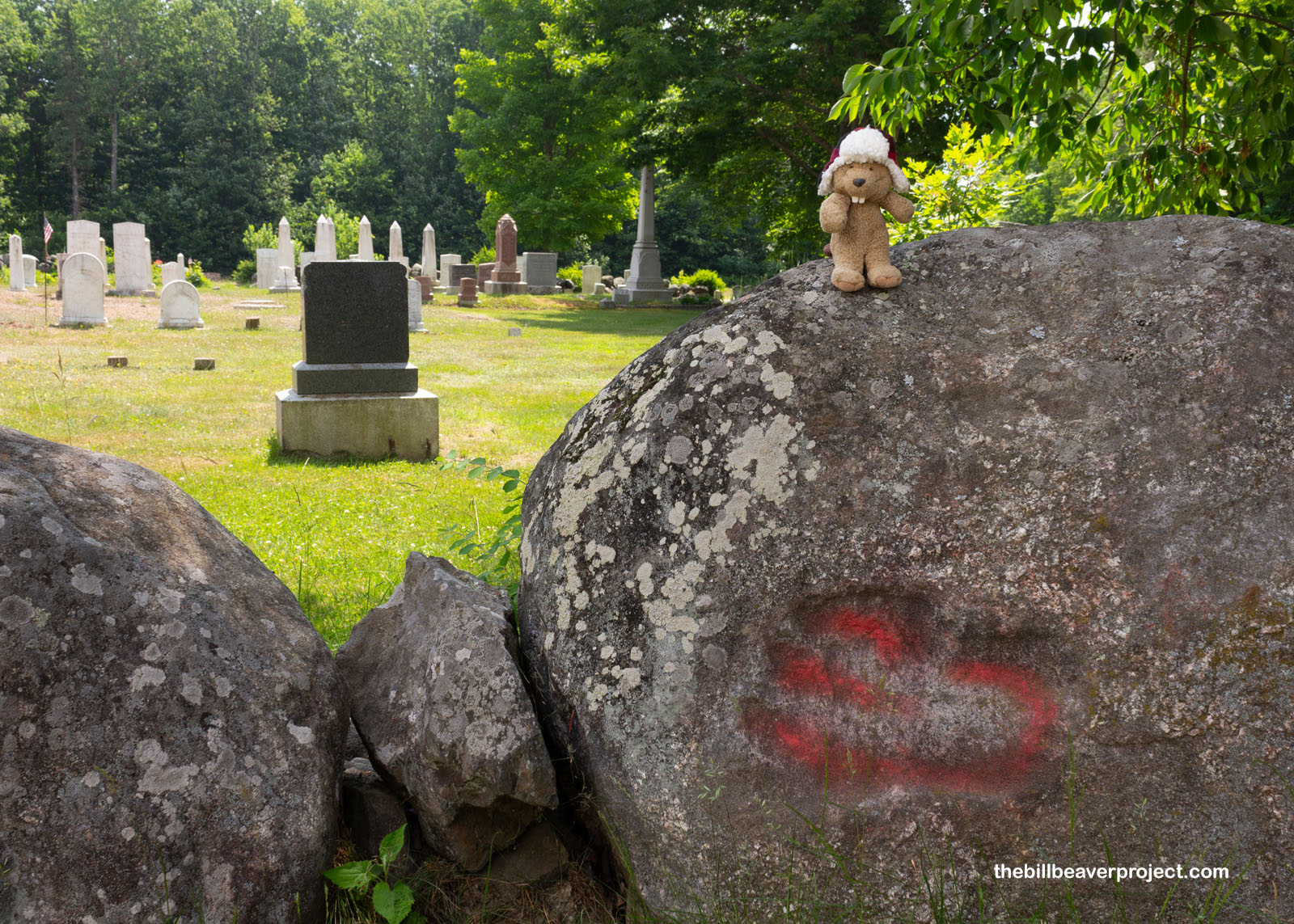 |
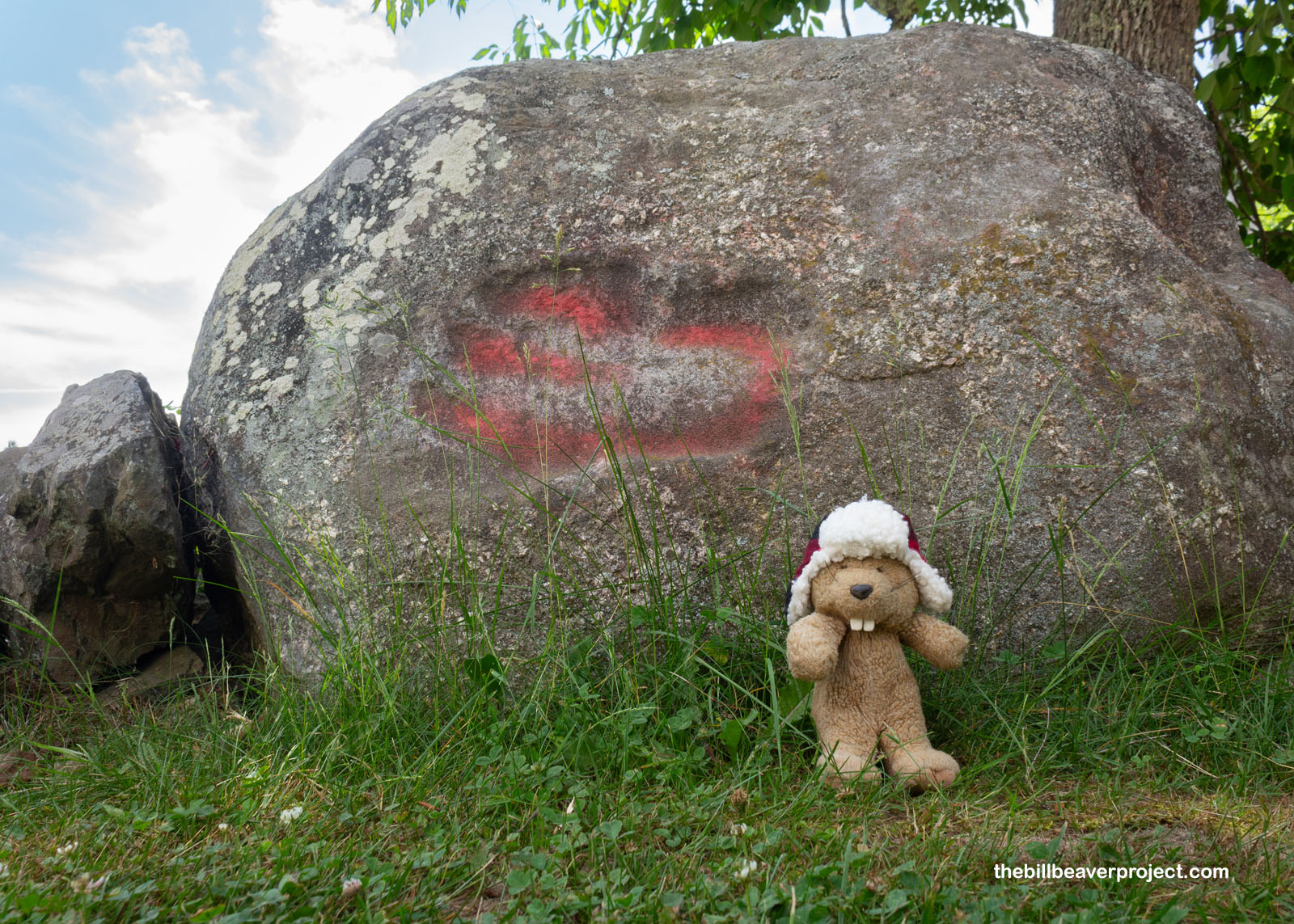 |
I decided to go somewhere with air conditioning and air of mystery, which brought me down, after a long, fruitless wait for a lobster roll at Red’s Eats, to the old capital of Portland. Not to be confused with the weird city, Portland, Maine is home to its own assortment of oddities, in particular, the International Cryptozoology Museum!
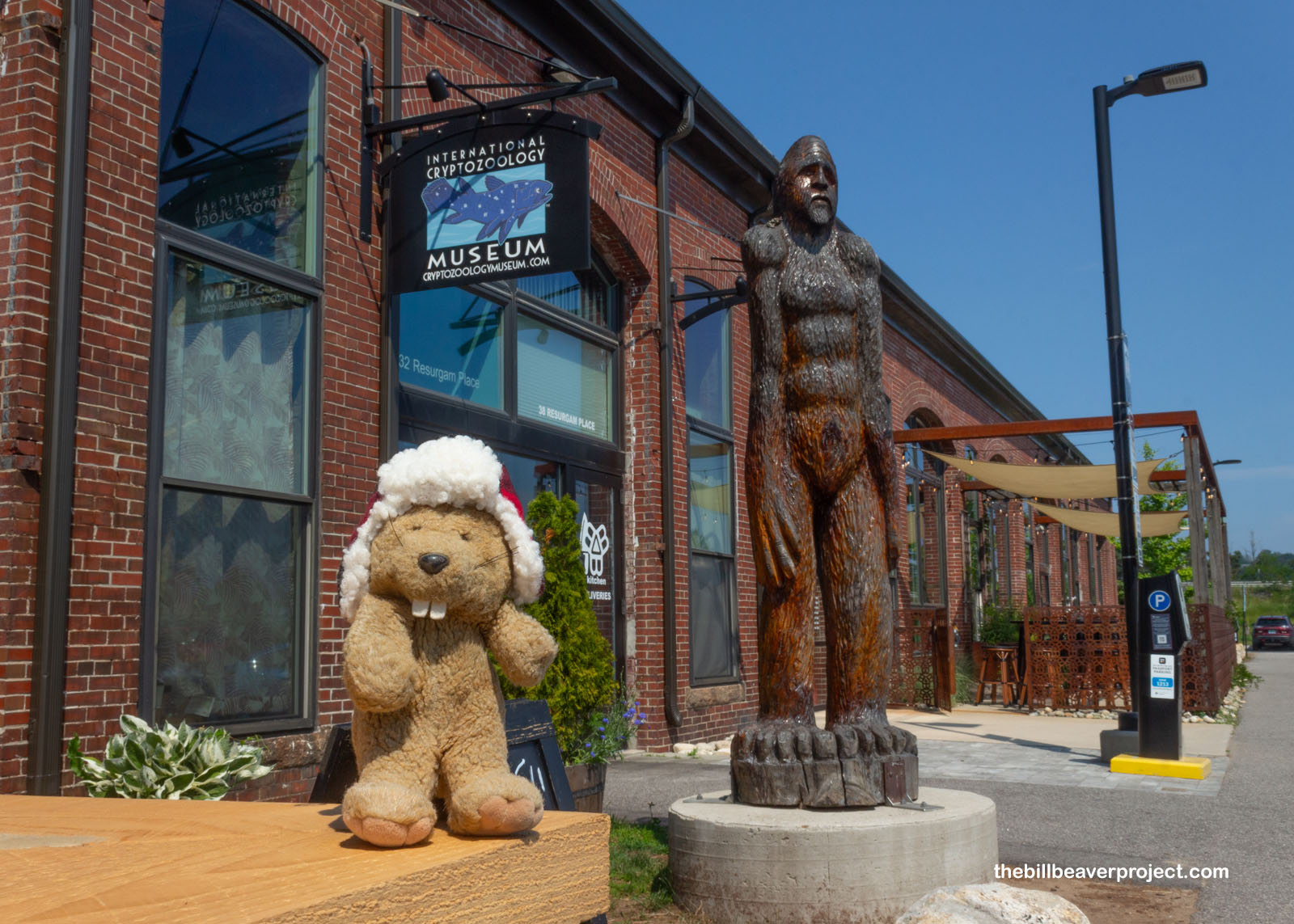 |
Based on my history with cryptozoology, I was super surprised, on entering this long, narrow exhibit space, to find a life-sized Creature from the Black Lagoon, Gremlin models, and even a Teenage Mutant Ninja Turtle, supposedly inspired by the Japanese water monster, kappa. I was a little confused, because I was pretty sure no one was reporting sightings of tiny tiki people running around, for instance. However, as museum founder, Loren Coleman, puts it, movie monsters have drawn all kinds of inspiration from those mysterious, maybe mythical, creatures we know today as cryptids.
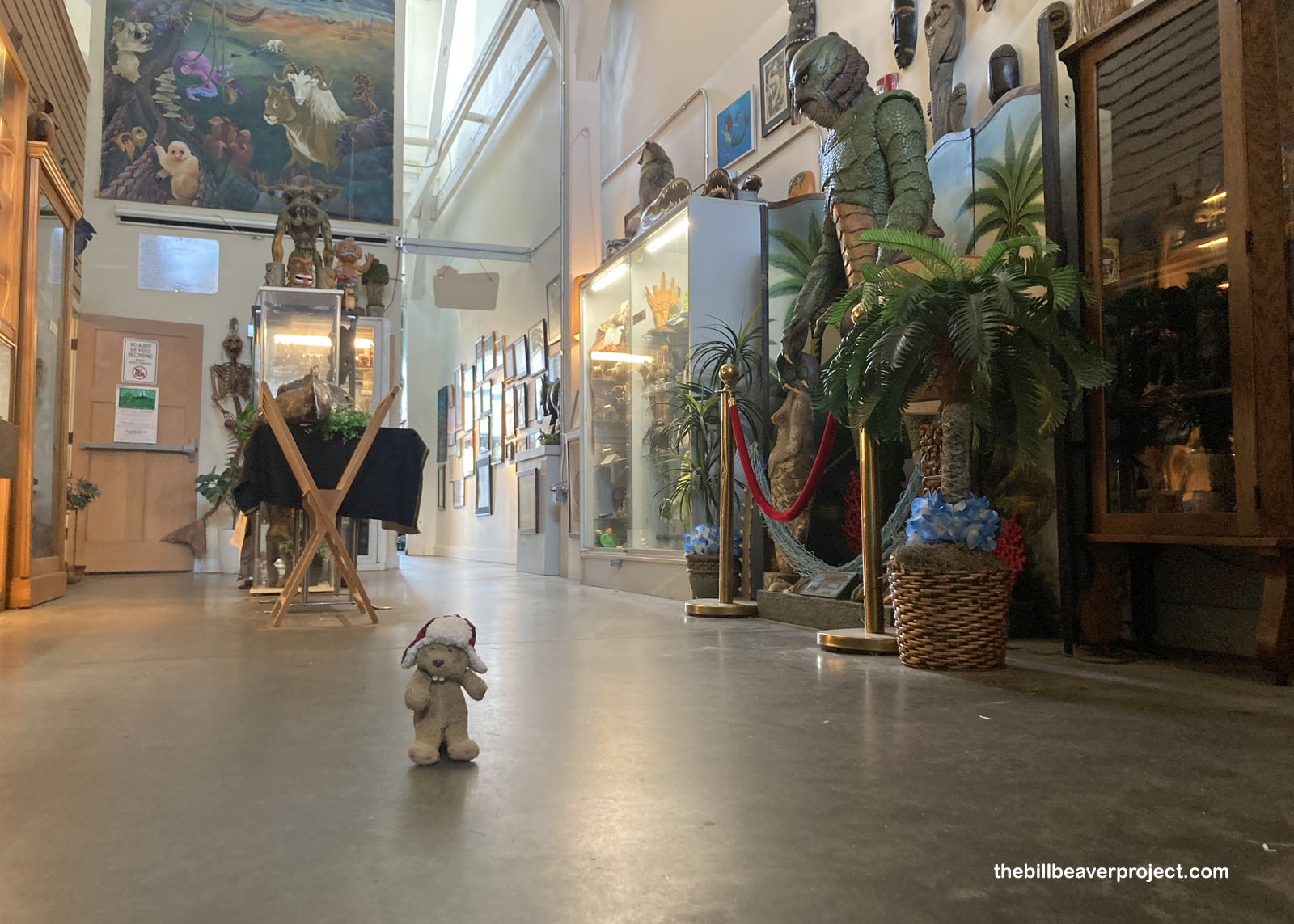 |
Of course, the mission of cryptozoology is to identify the source of those myths, whether it’s a sea monster later revealed to be an ancient coelacanth, or an actual thylacine, thought to be extinct since at least 1986 but still supposedly sighted from time to time on its home island of Tasmania! It turns out, the whole world is full of cryptids with many variations in sightings and evidence!
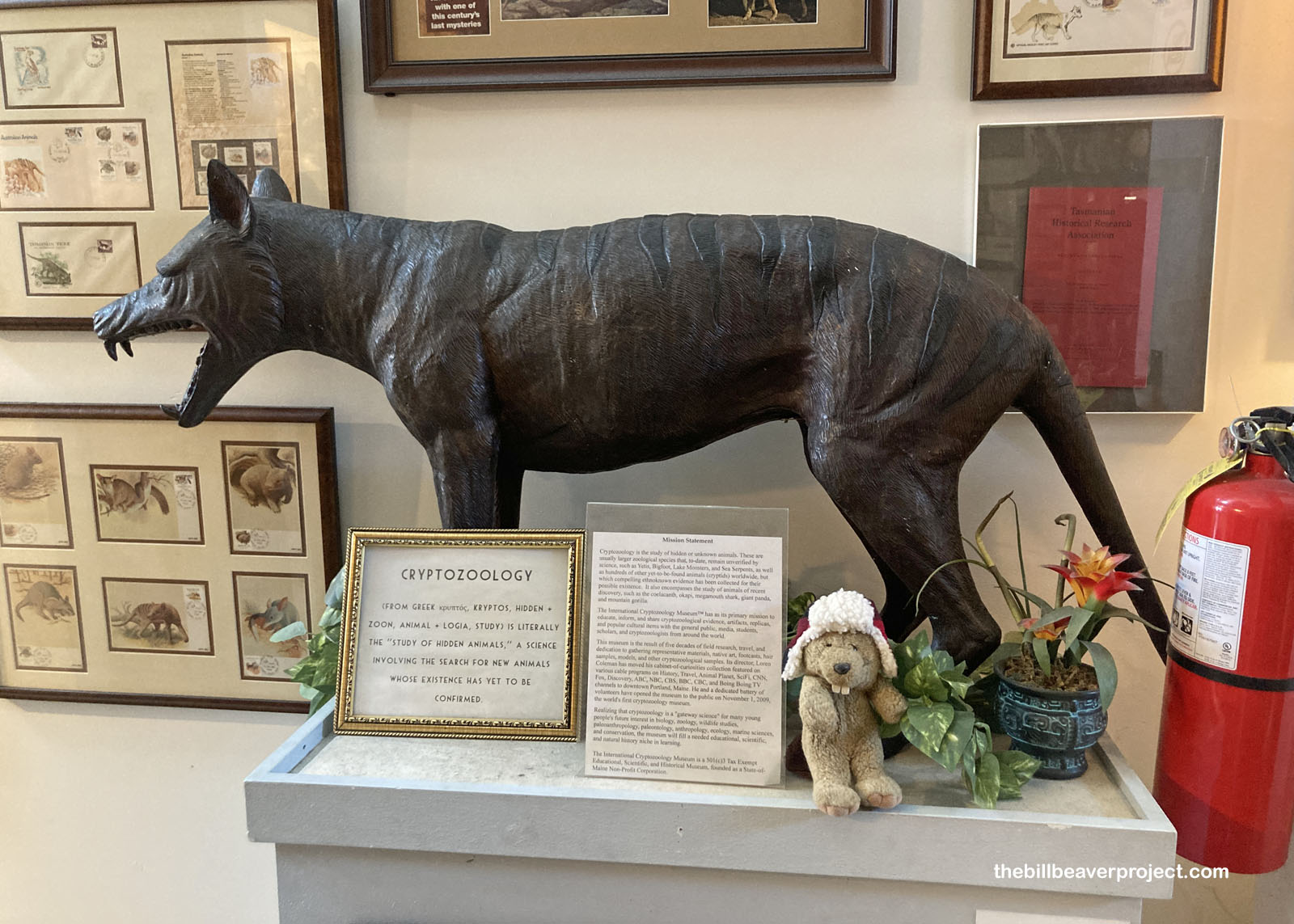 |
Naturally, no cryptozoology museum would be complete without Bigfoot! In fact, at least half the museum was made up of the Sasquatch Revealed 2020 exhibit, featuring plenty of information about Bigfoot and his leftovers. There were lots of tracks I recognized, like Patty’s from Bluff Creek and the cast from Skookum Meadows! There were hair specimens and charts of Bigfoot history and presumed behavior. Plus, there was even an entire display case of poop! Yup, it was full of wildlife poop, human poop, and what was labeled Sasquatch poop! How they found it, we may never know, but I was glad not to have to clean it up!
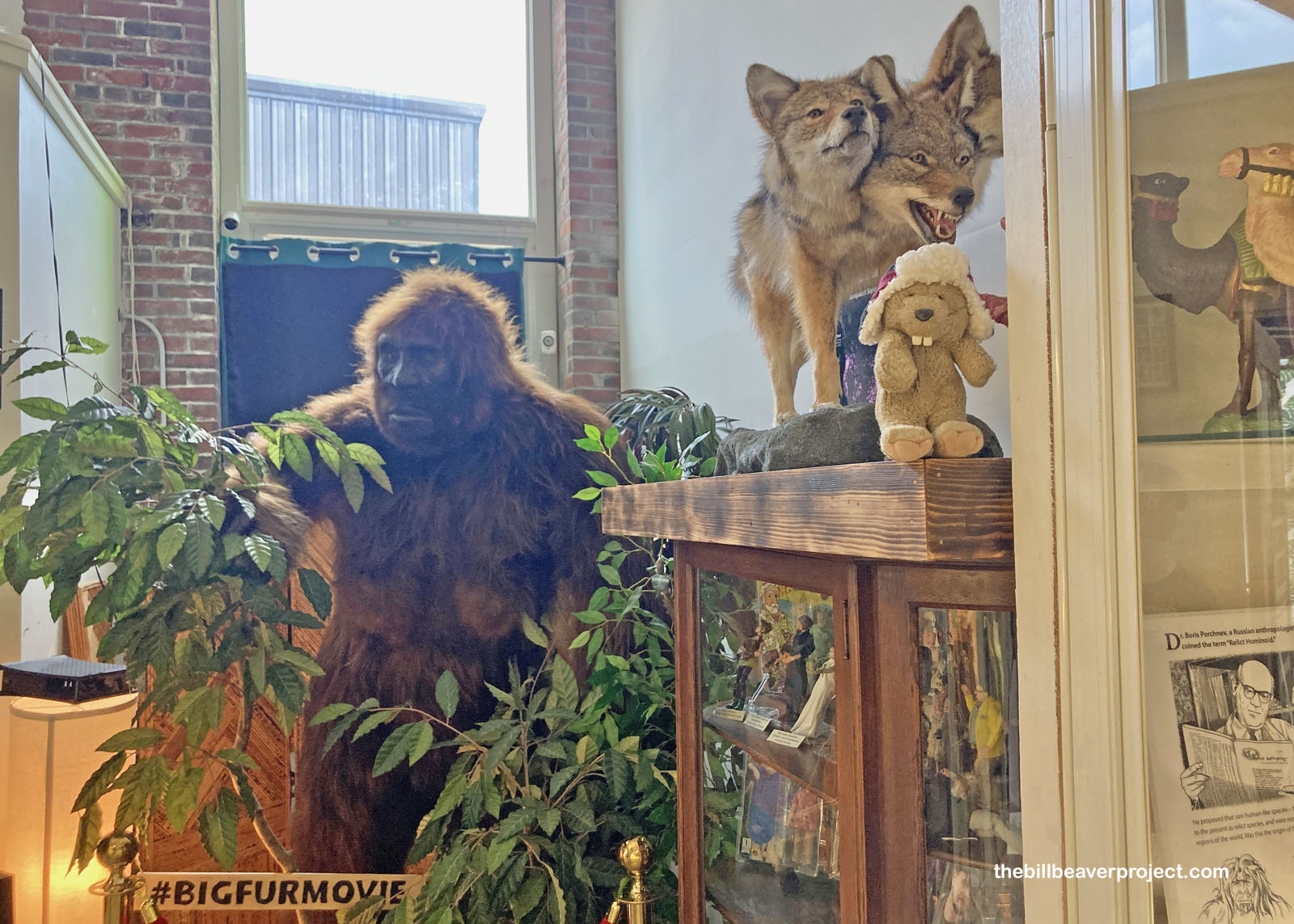 |
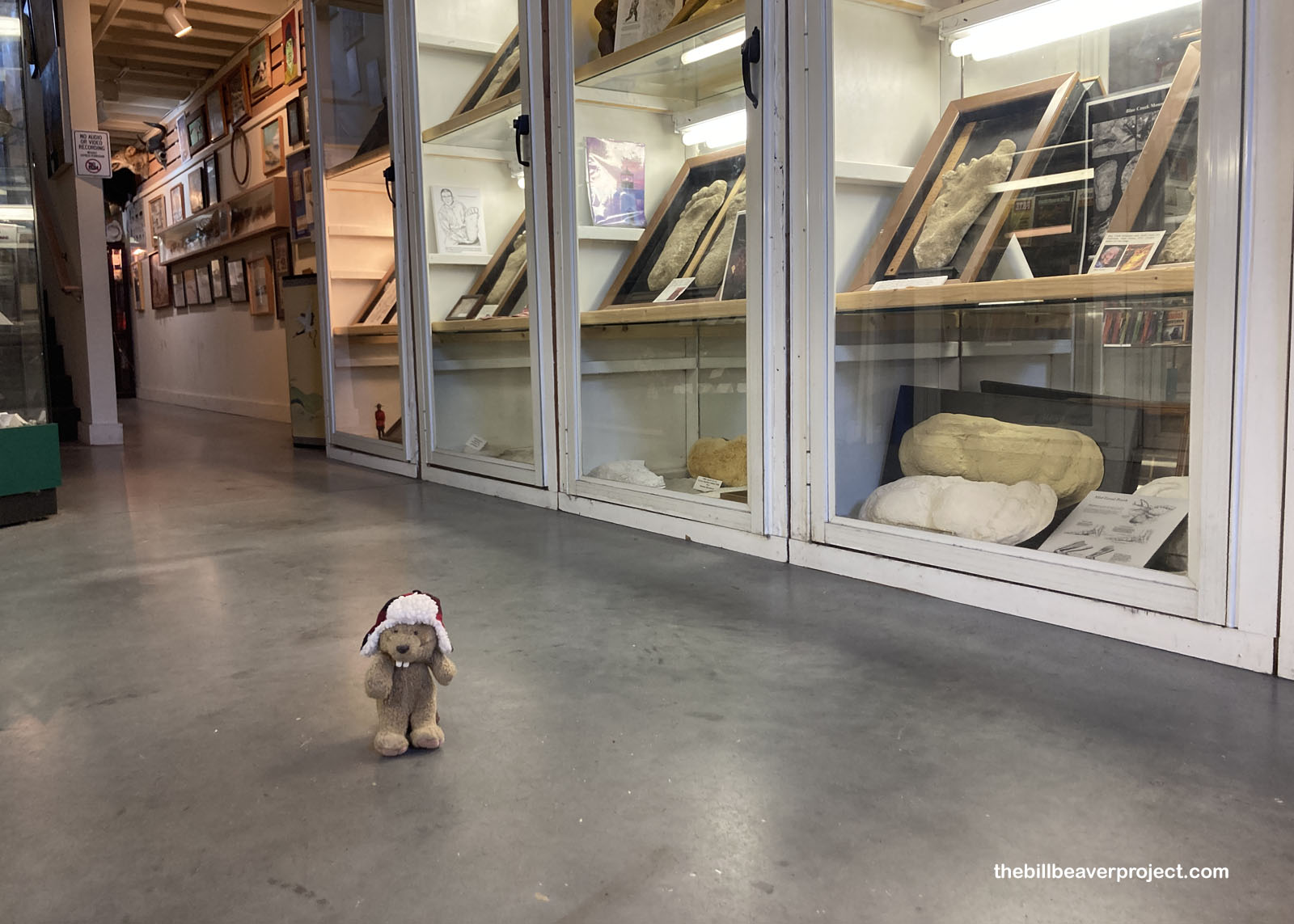 |
Upstairs was a diorama of even more cryptids, like the Kongamato of Zambia (technically the pterodactyl model Freaky Links) and my old pal, Mothman! I was shocked to learn that the Mothman was blamed for the disappearance of a German Shepherd named Bandit the night of the first Mothman sightings, November 15, 1966! He chased two red eyes into the darkness and was never seen again! Today, Bandit’s memorialized here at the International Cryptozoology Museum!
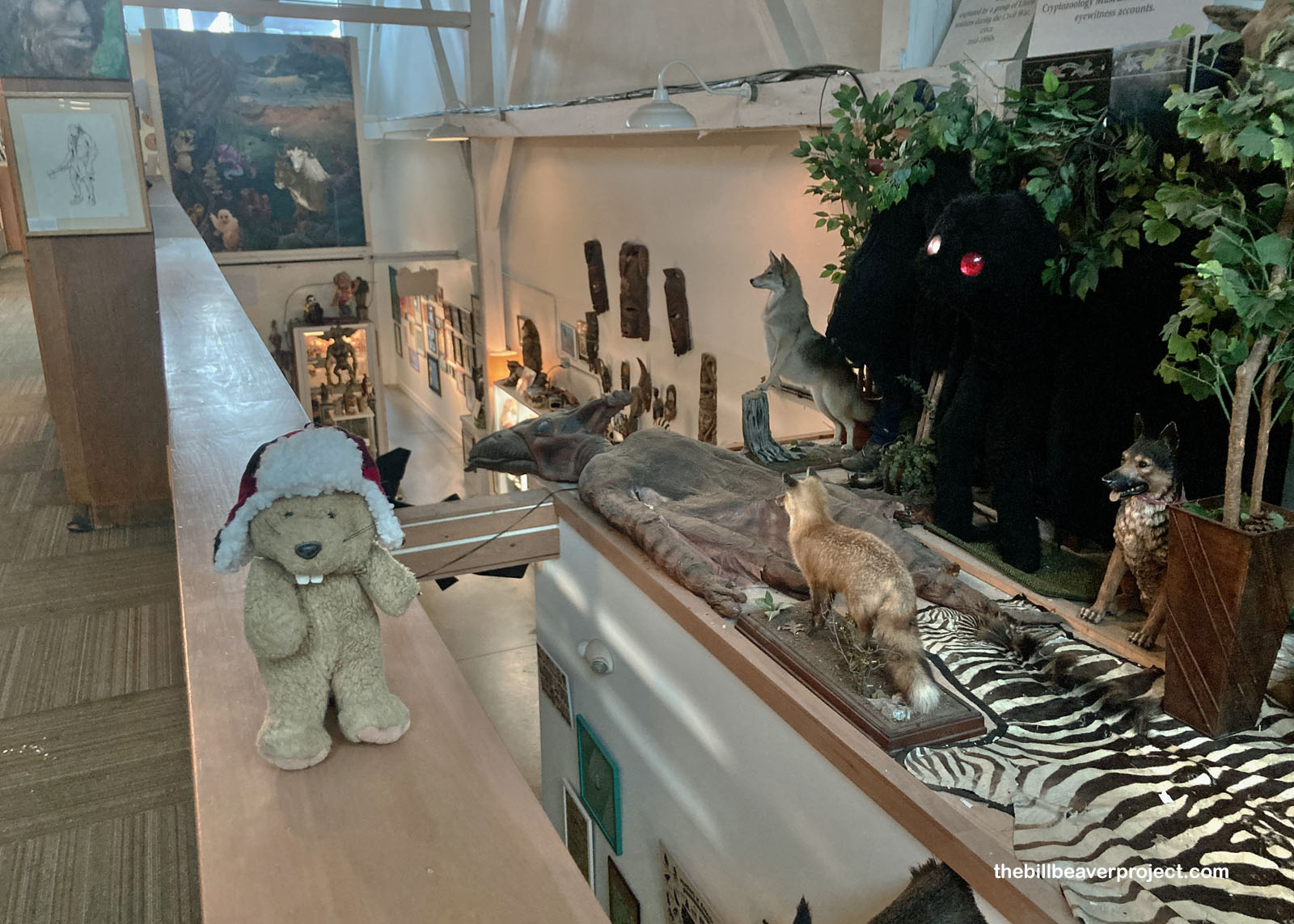 |
And then I was astonished to see what appeared to be the famous Pangboche yeti scalp, stolen from its Nepalese monastery in 1991! It had first come to the attention of Texas yeti enthusiast, Tom Slick, in 1959, and his companion, Peter Byrne, took a finger from the monastery’s “yeti hand.” It was smuggled out of the country by none other than actor, Jimmy Stewart, allowing the yeti’s fame to spread and ultimately draw the attention of thieves! I was pretty sure this wasn’t the original scalp, but I still wondered! In 2011, replicas of the artifacts, designed by Weta Studios, were brought back to Pangboche, where they still bring in some income from tourists and cryptid fans to the small mountain community!
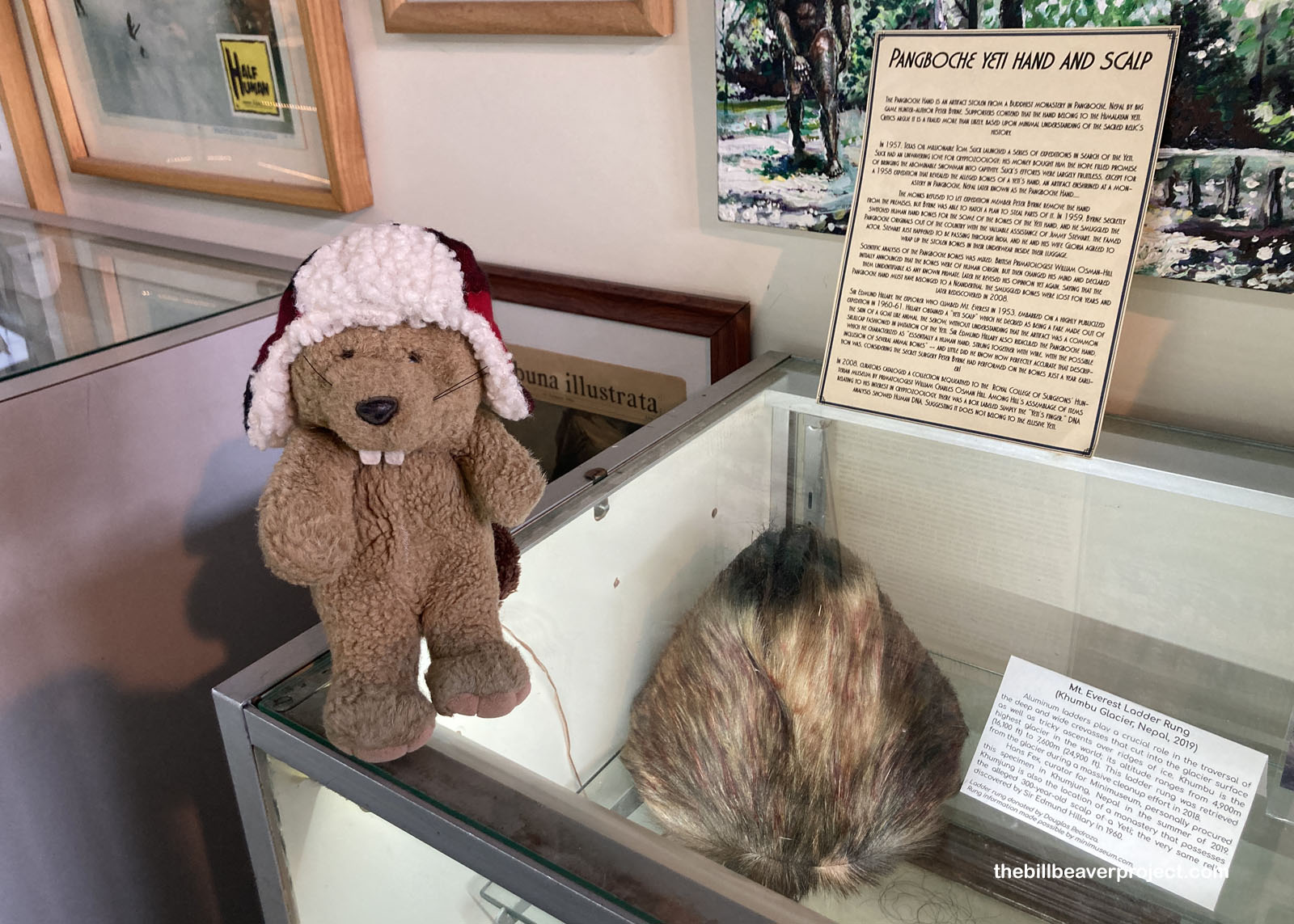 |
And well, what says tourism like more Bigfoot? This big fella was created for fun by Wisconsin taxidermist, Curtis Christensen, in 1990, then donated to the newly self-titled Bigfoot Capital of the World, Crookeston, Minnesota! After standing in for thousands of photos and helping to sell hundreds of Bigfoot dolls at RBJ’s Restaurant, it has since found its way here to the International Cryptozoology Museum, a towering conclusion to a wild and wonderful collection!
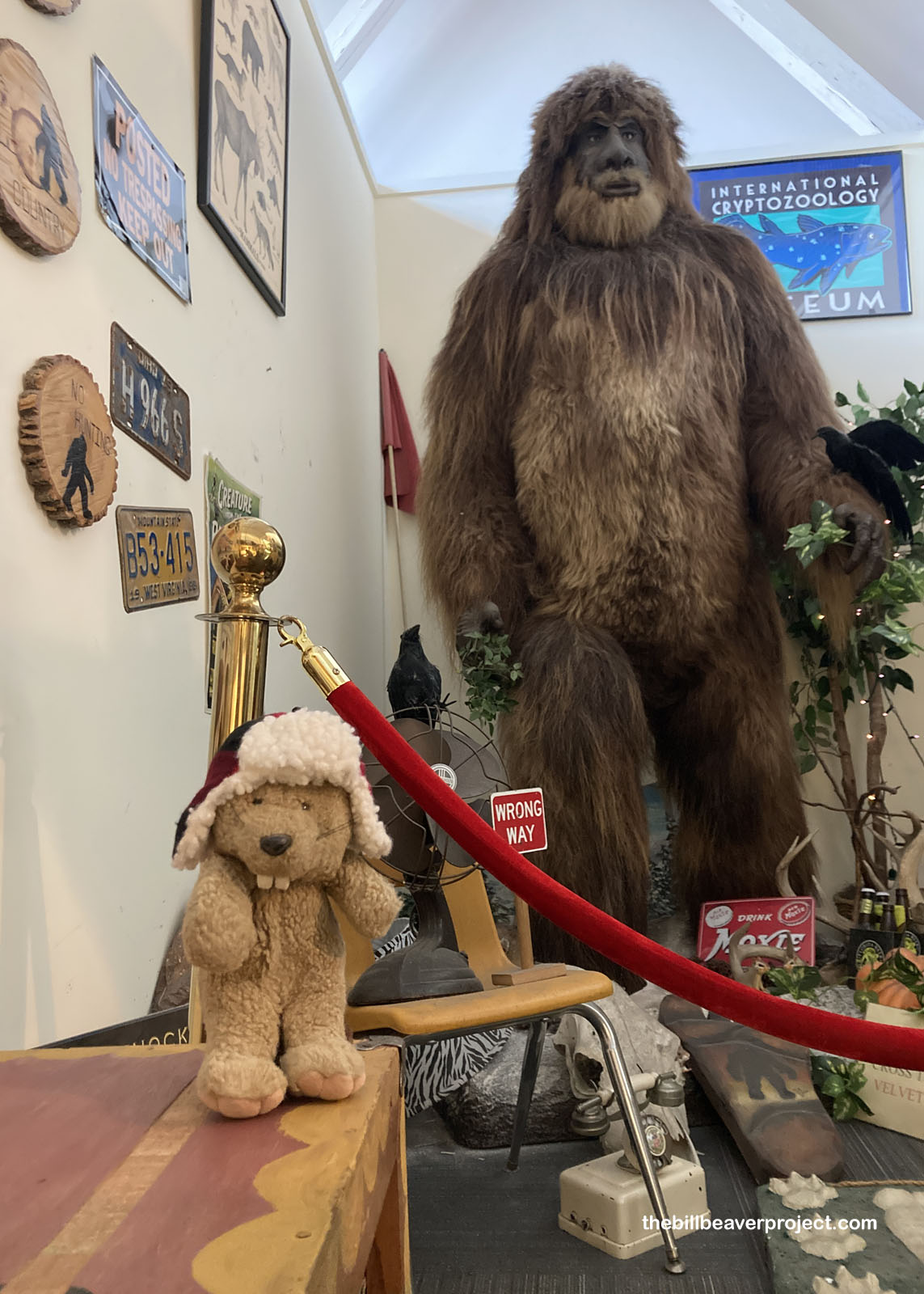 |
Speaking of towering, once I’d emerged from the museum and weathered one wicked thunderstorm, I decided to use up the last of my daylight enjoying some other towering spectacles around Portland. In particular, I wanted to see the Portland Observatory, the last remaining signal tower of its kind in America! It was designed by Lemuel Moody in 1807 and was used to communicate ship to shore using flags! The ship would flash one flag, to be mirrored by the tower keeper, which would then notify the merchants on shore that their ship was coming in at last! Shipowners would pay a subscription fee to Mr. Moody to have their flags flown from the Observatory!
 |
But the coast of Maine is more famous for lights than flags, and so I wrapped up my tour of Portland by paying a visit to Cape Elizabeth and the lovely Portland Head Light! Surrounded by brilliantly pink beach roses, it was a gorgeous spectacle to see atop these stormy cliffs, where this tower has watched over the waters since January 10, 1791!
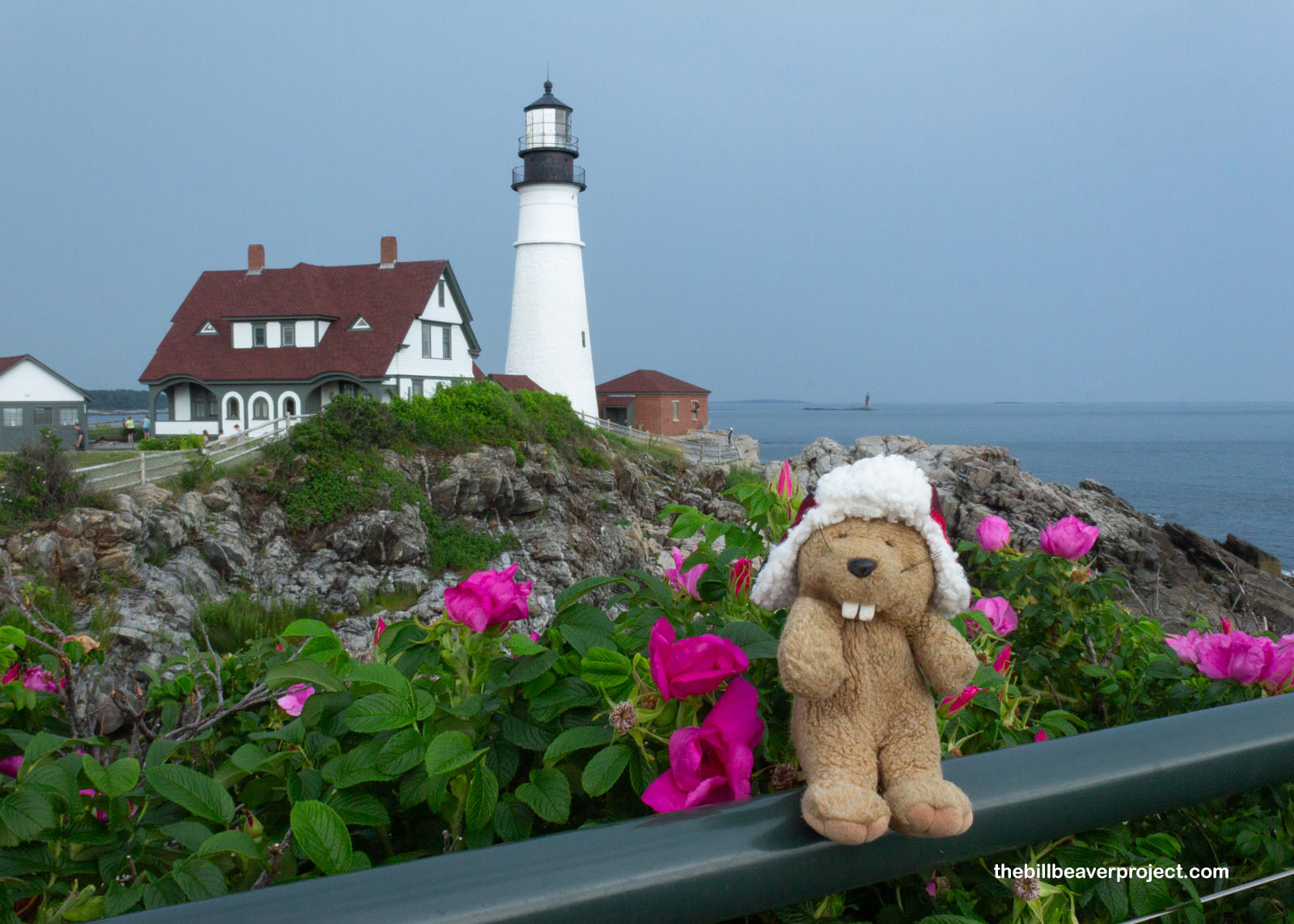 |
Still preserved here are the keeper’s house from 1891, a duplex that housed the families of both head keeper and assistant keeper, as well as foghorns that could alert incoming ships when the light couldn’t break through the fog! All of these efforts weren’t always effective, though, as the Annie C. Maguire ran aground here on Christmas Eve 1886 in full visibility of both the shore and the lighthouse. Luckily, the only thing lost on this ship was the dignity of the passengers!
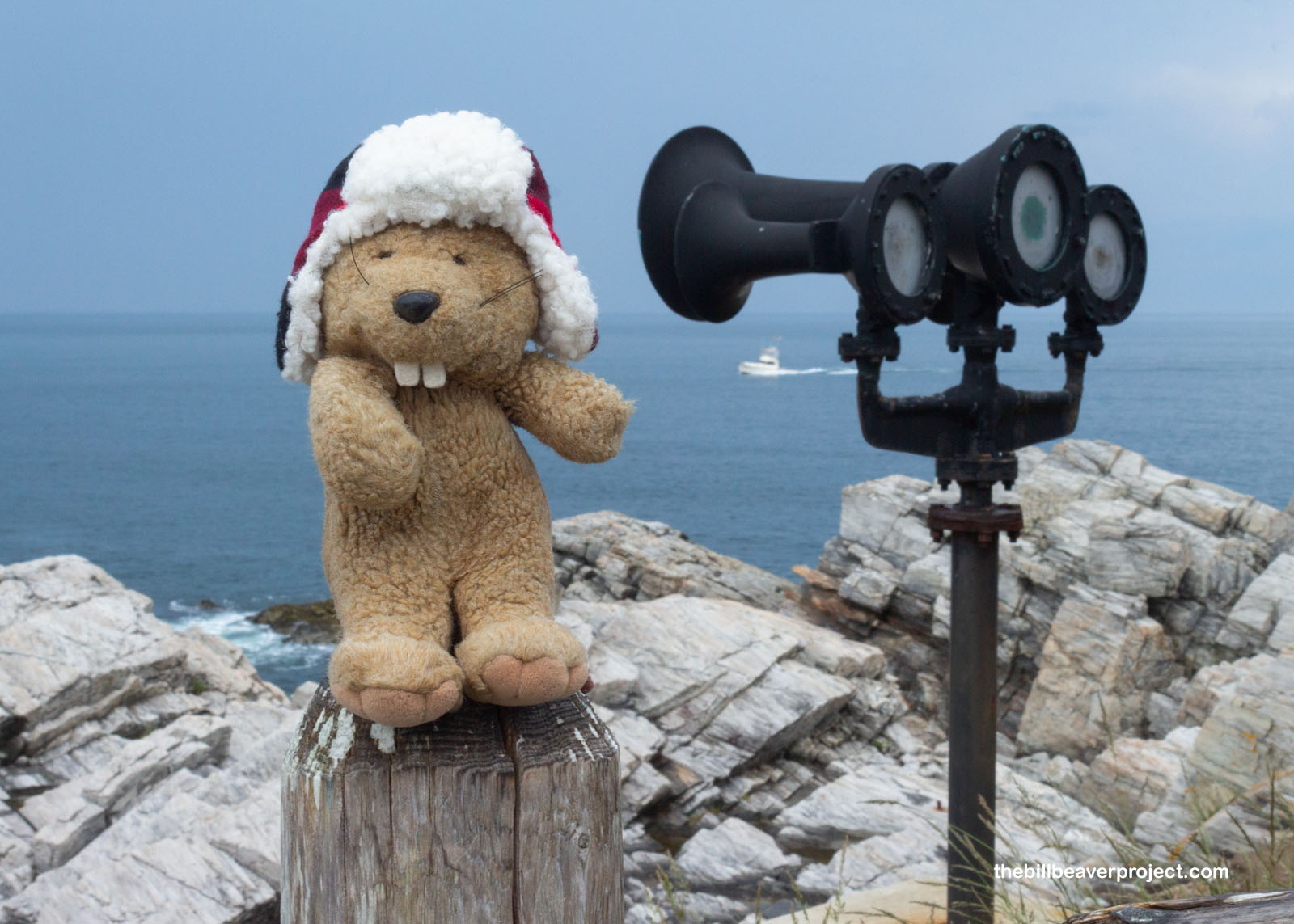 |
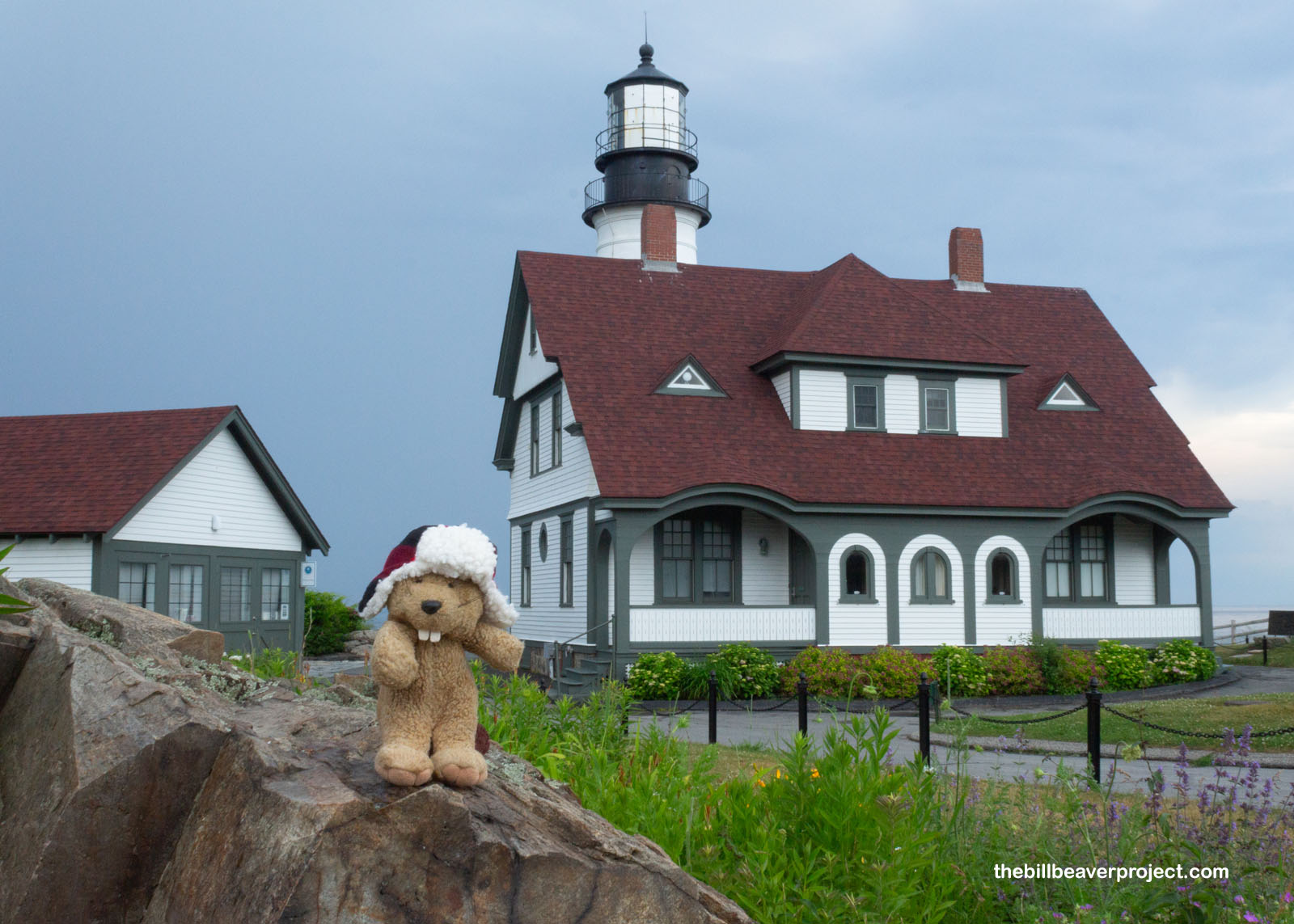 |
And with that, I wrapped up my day looking out over the rocky shores of the Atlantic! To me, there’s something really special about rocky shores. I don’t want to knock down sandy beaches, but I think these kinds of coastlines are really pretty, kind of intimidating, but also mysterious. Who knows what’s crashed against them? Who knows what neat things are swimming and crawling around in their tide pools? Well, I’ll try to find out tomorrow. I’m going to visit some of them on the opposite end of the state!
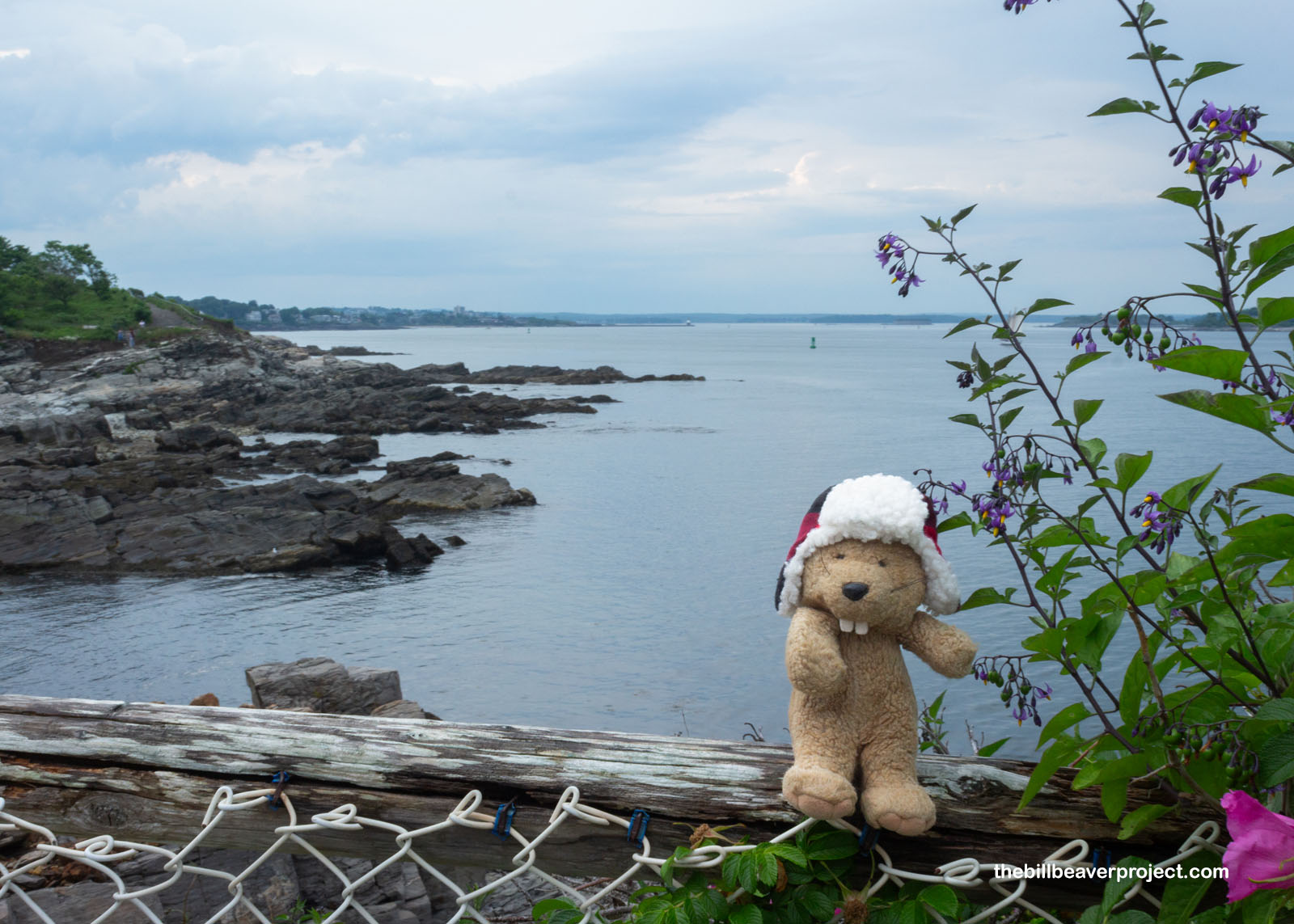 |
Tomorrow’s national park site is one I’m kind of on the border about, literally! It counts as a US National Park, but it’s co-run and geographically located across the Canadian border! Tune in tomorrow for my exploration of Roosevelt-Campobello International Park, the first of its kind I’ve ever seen!
Coasting back to Bangor!

 Previous Day |
Total Ground Covered: 513.0 mi (825.6 km) |
 Next Day |
